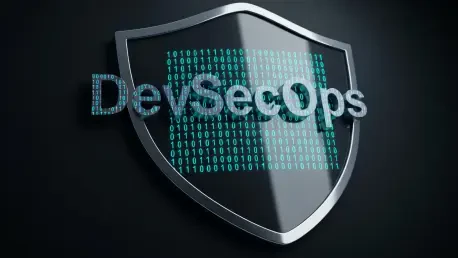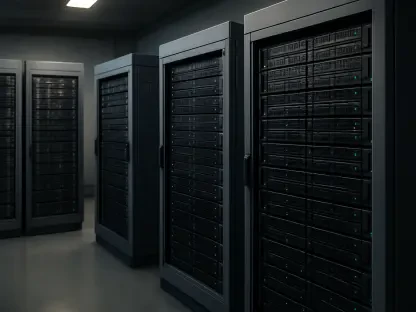I’m thrilled to sit down with Vijay Raina, a seasoned expert in enterprise SaaS technology and software design. With his deep expertise in DevSecOps and a knack for thought leadership in software architecture, Vijay is the perfect person to shed light on the growing importance of integrated security in today’s fast-paced development landscape. In this conversation, we dive into the driving forces behind DevSecOps adoption among U.S. enterprises, the challenges of securing modern software environments, the innovative solutions being implemented, and the transformative impact on businesses striving to balance speed and security. Let’s explore how this approach is reshaping the future of software development.
How would you describe DevSecOps to someone who’s just hearing about it for the first time?
DevSecOps is essentially a way of building software where security is baked into every step of the process, rather than being an afterthought. It brings together development, security, and operations teams to work as one unit from the get-go. Think of it like building a house—you wouldn’t wait until it’s finished to install locks or an alarm system; you’d plan for safety while designing the blueprint. In the same way, DevSecOps ensures that as code is written, tested, and deployed, security checks and practices are happening alongside. It’s all about catching risks early, automating protections, and making sure the software is secure without slowing down innovation.
What’s fueling the surge in DevSecOps adoption among U.S. companies right now?
A big driver is the sheer rise in cyber threats—attacks are getting more sophisticated, and the cost of a breach can be devastating, both financially and reputationally. On top of that, companies are under pressure to comply with stricter regulations around data protection. Add to that the shift to cloud-based systems, which are complex and introduce new vulnerabilities, and you’ve got a perfect storm. Businesses are realizing that old-school security, where you tack on checks at the end, just doesn’t cut it when you’re pushing out updates daily or even hourly. DevSecOps offers a proactive way to stay ahead of risks while keeping up with the demand for speed.
How have escalating cyber threats shaped the urgency for integrating security into development processes?
Cyber threats have evolved from one-off hacks to organized, persistent attacks targeting every layer of a business’s digital presence. Ransomware, data leaks, and supply chain attacks are now common, and they exploit gaps that traditional security often misses. When development moves fast without integrated security, vulnerabilities slip through, and attackers pounce. This has forced companies to rethink their approach—waiting to fix issues after deployment is too late. DevSecOps flips that by embedding security early, so teams can spot and fix flaws before they become entry points for attackers. It’s a direct response to a threat landscape that’s growing nastier by the day.
In what ways do stricter compliance requirements push organizations toward a DevSecOps model?
Compliance rules like GDPR, HIPAA, or SOC 2 aren’t just suggestions—they come with heavy fines and reputational damage if you don’t meet them. These standards demand continuous monitoring, data protection, and proof of secure practices, which can be a nightmare to manage manually. DevSecOps automates a lot of that burden by building compliance checks into the development pipeline. For instance, automated scans can flag issues that violate regulations before they go live, and detailed reports can be generated for audits without extra effort. It’s about staying on the right side of the law while keeping development moving forward.
Why is DevSecOps particularly critical in today’s cloud-native environments?
Cloud-native systems, while powerful, are incredibly complex. You’ve got distributed architectures, microservices, and multiple environments—think AWS, Azure, or hybrid setups—that all need to be secured consistently. A single misconfiguration can open the door to a breach, and traditional security tools weren’t built for this kind of sprawl. DevSecOps tackles this by integrating security policies directly into cloud workflows, often through things like “policy as code,” which ensures rules are enforced automatically. It’s the only way to keep up with the scale and speed of cloud development without leaving gaping holes.
What are some of the toughest challenges companies face when securing their software development pipelines?
One of the biggest hurdles is the disconnect between teams—developers want to move fast, security folks want to lock things down, and operations is focused on stability. Without alignment, you get friction and overlooked risks. Another challenge is the sheer speed of modern development; with continuous integration and deployment, there’s no time for slow, manual security reviews. Then there’s the complexity of tools and environments—managing security across cloud platforms, APIs, and third-party integrations is a juggling act. Companies often struggle to find the right balance between speed and safety, and that’s where a cultural shift to DevSecOps can make a huge difference.
How do fragmented security processes create vulnerabilities in rapid development settings?
When security processes aren’t unified, you end up with blind spots. Imagine a development pipeline where one team scans for code flaws, another handles infrastructure, and no one’s looking at how they interact—issues fall through the cracks. In fast-paced environments, where code is deployed multiple times a day, these gaps become easy targets for attackers. Fragmentation also slows down response times because there’s no clear ownership of a problem. DevSecOps aims to stitch these pieces together with automation and shared responsibility, so security isn’t a patchwork but a seamless layer across the pipeline.
Why do traditional security practices fall short in the face of automated deployments?
Traditional security often relies on manual checks or end-of-cycle audits, which worked fine when releases happened monthly. But with automated deployments pushing code out constantly, there’s no way a human can keep up. A manual review might take days, while the code is already live and potentially vulnerable. Plus, these old methods miss the nuances of modern setups like containerized apps or cloud configs. DevSecOps replaces that with automated tools—static code analysis, dynamic testing—that run in real-time within the deployment pipeline, catching issues at the speed of automation.
Can you share an example of how poor collaboration between teams delays fixing security issues?
Absolutely. I’ve seen cases where a developer pushes code with a subtle flaw, but the security team only catches it weeks later during a review because they weren’t looped in early. By then, the code’s live, and fixing it means rolling back updates, which disrupts operations. The ops team gets frustrated because downtime affects users, and the dev team feels blamed for something they didn’t know was an issue. This blame game slows everything down. If those teams had collaborated from the start—say, with shared tools and visibility through a DevSecOps framework—the flaw could’ve been caught and fixed in hours, not weeks.
How do APIs and third-party integrations heighten security risks for organizations?
APIs and third-party tools are like open windows—they’re essential for functionality but also expand the attack surface. Every API endpoint or external library you integrate is a potential entry point if not secured properly. A poorly coded API might expose sensitive data, or a third-party component could have hidden vulnerabilities that attackers exploit. The challenge is that teams often don’t have full control over these external pieces, and traditional security might not even scan them. DevSecOps addresses this by embedding checks for dependencies and API security into the development process, so risks are flagged before they’re deployed.
What role do you see DevSecOps playing in the future of software development over the next decade?
I believe DevSecOps will become the default standard, not just a nice-to-have. As cloud-native systems grow, AI-driven automation advances, and threats get smarter, security can’t be a separate silo—it has to be intrinsic to how software is built. We’ll see more predictive security, where tools anticipate risks before they happen, and tighter integration of compliance into everyday workflows. DevSecOps will also evolve to support emerging tech like edge computing or serverless architectures. Ultimately, companies that don’t adopt this mindset will struggle to keep up with both innovation and safety. It’s going to be the backbone of resilient digital growth.
What’s your forecast for the evolution of DevSecOps in the coming years?
I think we’re heading toward a future where DevSecOps is even more automated and intelligent, leveraging AI and machine learning to not just detect but predict and prevent issues before they arise. As cloud-native and hybrid environments become the norm, we’ll see frameworks that are even more tailored to those setups, with seamless security across every layer. Compliance will be fully embedded, almost invisible to developers, yet always active. The focus will shift to proactive resilience—building systems that can adapt to threats in real-time. For businesses, partnering with experts who can navigate this shift will be crucial to staying competitive and secure.









